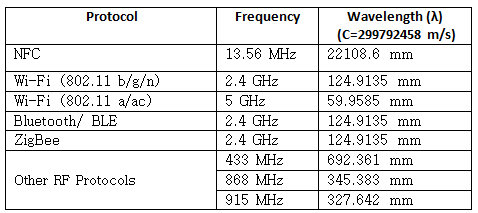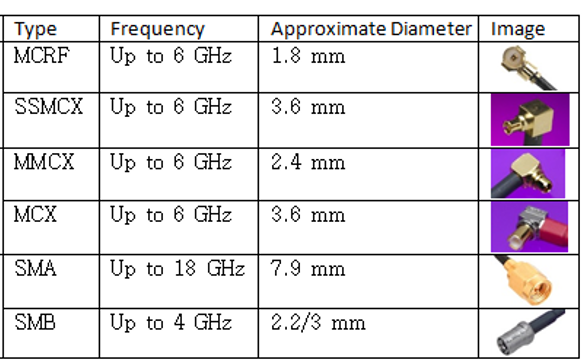Introduction
Wireless technology has emerged as the primary medium of communication for connected devices at present. To enable such widespread wireless communication, a wireless transceiver circuit with an suitable selected and placed antenna is necessary. In this spotlight, we will focus on the basic antenna terms first.
Some basic antenna terms:
Antenna Efficiency: Is the best way to assess the performance of an antenna and to compare performance between multiple antennas. Antenna efficiency is to measures how well an antenna converts RF power at its terminals into radiated RF power. The closer to 100%, the better the antenna
Radiation Pattern: The radiation pattern is a graphical representation of the radiation from an antenna as a function of space. It describes how an antenna radiates energy into space or how it receives energy.
Isotropic Radiator: The isotropic radiator is a hypothetical lossless antenna that radiates its energy equally in all directions. This antenna would have a spherical radiation pattern.
Antenna Gain: It is the ratio between radiation intensity in a given direction and the radiation intensity of an isotropic antenna.
Attenuation / Path Loss: It is the reduction of the power density of a propagating wave as it travels in space.
Characteristics Impedance: It is the ratio of magnitude of voltage and current waves in an infinite transmission line at a zero reflection wave condition.
VSWR: The voltage standing wave ratio (VSWR) is a measure of how much power is delivered to a device as opposed to the amount of power reflected from it (which is known as Return Loss). It is the ratio of the maximum voltage to the minimum voltage in a standing wave pattern developed when power is reflected from a load.
Antenna Selection
Learning the wireless standard and protocol used by the transceiver are important in selecting the matching antenna, each wireless standard uses different operational radio frequencies for communication. Antenna sizes vary proportionally to the wavelength (λ).
Some popular short and medium range wireless protocols and their respective frequencies are:

Other protocols include LTE (cellular), GNSS (GPS), and various sub 1GHz ISM protocols such as LoRa.
You can verify the tuning-frequency accuracy by using a Vector Impedance Analyzer. Along with the resonant frequency, this analyzer can help in determining other antenna parameters such as impedance, reactance, and SWR.
Antennas range from highly directional (i.e., radiates in a narrow cone) to highly omnidirectional, which radiates in all directions to provide broader coverage. Real world antennas fall somewhere in between these two as there are no perfect omnidirectional or directional antennas. A majority of antennas in devices (and in the protocols mentioned in the table above) are essentially omnidirectional, so we shall limit our discussion to the more commonly used omnidirectional antennas.
There are many choices in terms of form factors, materials, and antenna families. The two super classes of antennas are PCB (also called Chip or SMT sometimes ) – where the antenna is directly soldered to a Printed Circuit Board and the other class is a “Cabled” antenna, where the antenna is connected to the PCB via some type of coaxial cable (usually micro-coaxial cable).
Antennas also be categorized by their construction / design such as - PCB, Whip, Helical, etc. They must be correctly selected based on the application, gain parameters, cost and placement requirements of the system. One antenna may be favored due to some factors such as cost, while antenna gain is selected based on the intended distance of coverage. Both Whip and PCB antennas provide high bandwidth and uniform radiation pattern. They are reliable and cannot be detuned, but they are expensive. Helical antennas have low bandwidth, can be detuned by interference, but are comparatively less expensive. These are just a sampling of types of antennas that a system designer may select, but not a complete list.
Connector Selection
For Cabled Antennas, RF transceivers / modems are coupled to the antenna by using the appropriate connector. In some instances, if your RF transceiver / modem is provided as a full assembly (e.g., daughter board), the connector on the PCB will already be pre-selected. However, if you are using a chipset and need to place the connector, then you need to be careful to avoid signal losses, so making the choice of a connector very important. A list of commonly available connectors is given below.
Press-fit connectors come with a limited mating cycle, hence, you have to avoid repeated detachment and attachment of these connectors. Note, the orthomode transducer (OMT) common connectors for many small device manufacturers is the MCX – which looks a lot like the MMCX or other connectors. Be very careful to know what connector is specified and what type is provided on the other end, so you have the correctly mating connectors.
Antenna Cable Selection
After deciding upon the antenna and the connector, you have to select a cable of suitable length. The cable size and characteristics impedance must be verified as well. You can experiment by opting for multiple cables of different lengths before selecting the optimal one.
You have to tightly mate the connector on the device to that of the antenna. In the case of micro connectors, they have to be pressed straight down on the receptacles. A tilted press may result in a damaged connector.
Superbat Antennas: www.rfsupplier.com
